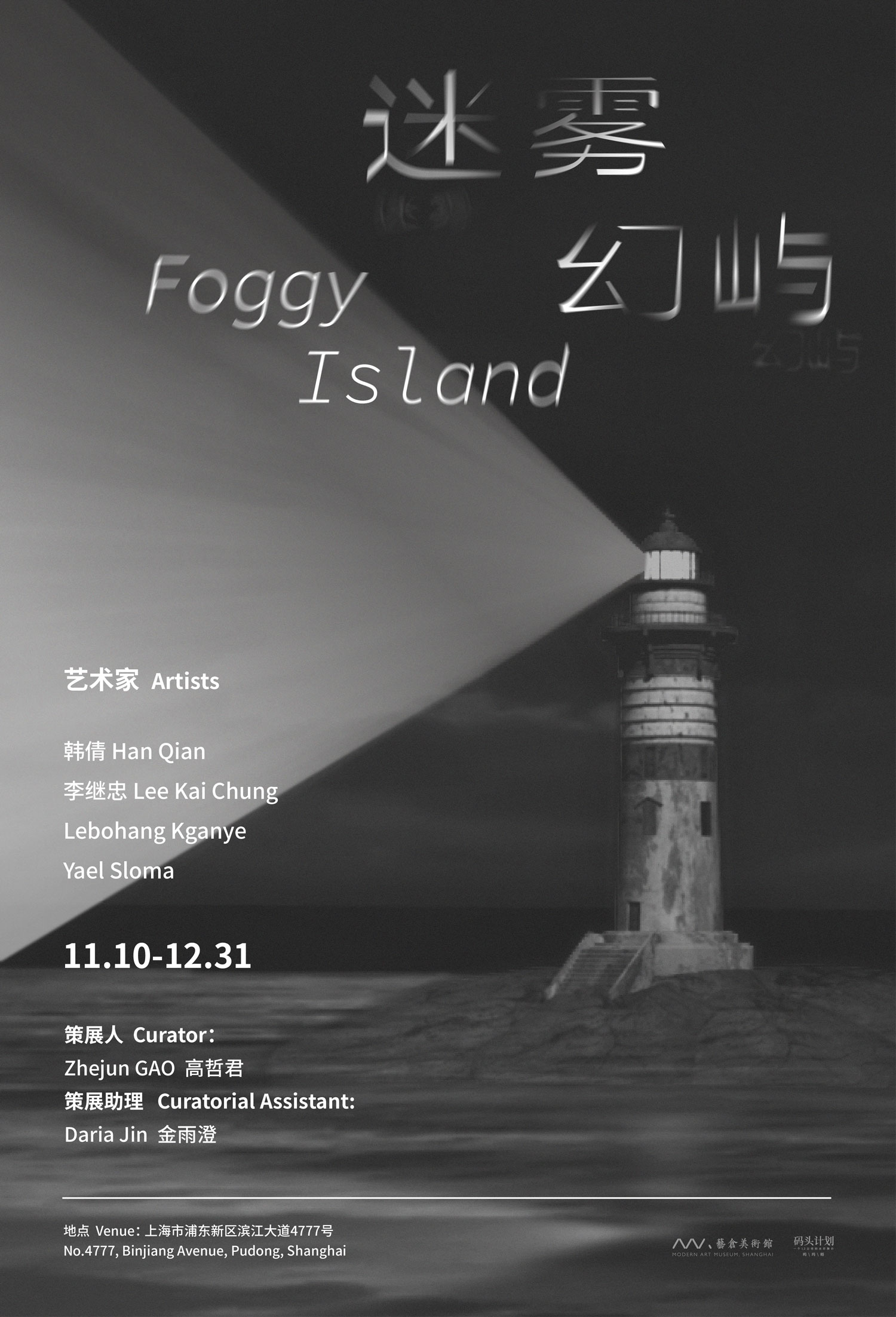The Modern Art Museum, Shanghai is delighted to present the upcoming exhibition "Foggy Island" from November 10th to December 31st, 2023.
This exhibition focuses on the video works of four artists: Han Qian, Lee Kai Chung, Yael Sloma, and Lebohang Kganye. The main concept revolves around "home" and showcases their creations related to family memories, immigration identities, and (post)-colonial histories. Rooted in diverse perspectives, employing various artistic techniques, and drawing from their unique cultural backgrounds, these artists contemplate the discourse surrounding the idea of home. Through these visually diverse narratives, we are invited to open up discussion and action in a context of change, development and mobility.
In recent years, the concept of home has been challenged in the context of migration and border studies. It is no longer viewed as a stable symbol representing nostalgia, traceability, or cultural origins. From this perspective, home is seen as an unstable concept—neither real nor imaginary, non-experiential yet non-preconceived—a space that hovers like a ghost outside the realms of nature and culture, detached from dimensions such as geography, race, history, and politics. Like islands adrift in a sea shrouded in fog, its boundaries shift with changing meanings, its appearance constantly transforms, tantalizingly close yet elusive—much like the Welsh word "Hiraeth," representing an unattainable, even nonexistent, never-to-come homeland.
The exhibition explores this theme from different angles, extending into individual experiences through the unique perspectives of the artists. Han Qian's latest video work, Veronica persica, interweaves her grandmother's journey as a first-generation immigrant to Wuhan's Qingshan due to industrial construction with the journey of Veronica persica. By forming the main narrative thread by the morphological description of this plant., the work questions the sense of belonging to the homeland and how the journey to find identity has influenced individual lives.
Israeli artist Yael Sloma's four-channel video work, The Von Trapps, juxtaposes Hollywood music, oral testimonies, and issues of identity. By appropriating and modifying the famous musical "The Sound of Music," explores the different stories and components that construct an immigrant's descendant identity, in order to realize the formation of a historical narrative. Her another work, Pravda, drawing on an actual court case, considers the impossibility of accessing the truth behind a marginal crime allegedly committed by a Russian immigrant.
South African artist Lebohang Kganye's three-channel video installation features two performances that are informed by the notion of healing, enacted through acts of naming and cleansing. In the title of the work, Dipina tsa Kganya, the word dipina means “songs” in the artist’s mother language of seSotho. The song referred to is that of her family clan names, traditionally passed down through oral tradition. Additionally, the Sotho word for “light,” kganya, is in the etymology of the artist’s last name Kganye. These performative gestures shown in the work are in conversation with the southern African practice of the “praise-singing” of clan names as a way of passing down the origins of the family story as an act of resistance to historical erasure, to insure its unwritten continuity.
Hong Kong artist Lee Kai Chung presents two video works from his research-based art project The Infinite Train (2020-), namely The Shadow Lands Yonder and As below, So above. Taking the war history as a point of departure, the research framework of The Infinite Train is based on the Greater East Asia Railroad, a mega infrastructure project proposed by the Empire of Japan in the early twentieth century. This research-based project focuses on the Manchurian belt as a meeting point between Europe and Asia, under the influences of multinational power struggle, how the concepts of human displacement and its mobility, labour of construction, emotional trauma, identity construction and transformation, ‘nation-making’ are interwoven through the transcontinental railway system and infrastructure. The project reaches out to the people who floated through history and were eventually forgotten or erased. Another exhibited work, The Digger, records the artist's process of digging the land but also serves as a metaphor for the ongoing question: where is the truth of history buried, and where should individual destinies lead?
Using images as branches, the artist builds an inaccessible habitat, attempting to mediate social problems as alienation phenomena in the suspension of life's exile. The Foggy Island floats between our eyes, and only through a serious and continuous gaze at it is it possible to ask the question: how do different concrete directions point to the ultimate rationalization of home? If and when is the turn of the non-poetic habitat coming to us? And how does what we do contribute to it?

